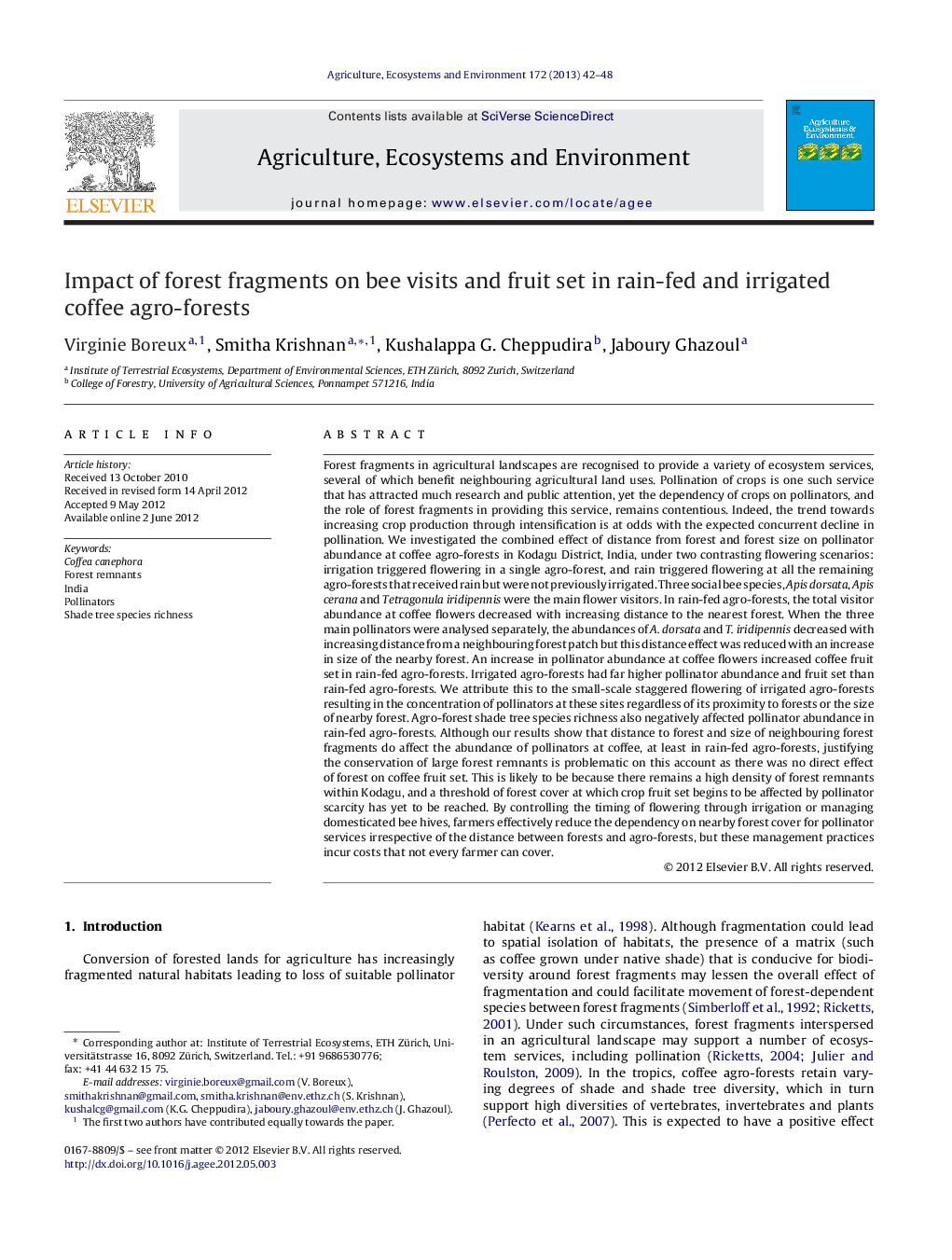| Article ID | Journal | Published Year | Pages | File Type |
|---|---|---|---|---|
| 2414240 | Agriculture, Ecosystems & Environment | 2013 | 7 Pages |
Forest fragments in agricultural landscapes are recognised to provide a variety of ecosystem services, several of which benefit neighbouring agricultural land uses. Pollination of crops is one such service that has attracted much research and public attention, yet the dependency of crops on pollinators, and the role of forest fragments in providing this service, remains contentious. Indeed, the trend towards increasing crop production through intensification is at odds with the expected concurrent decline in pollination. We investigated the combined effect of distance from forest and forest size on pollinator abundance at coffee agro-forests in Kodagu District, India, under two contrasting flowering scenarios: irrigation triggered flowering in a single agro-forest, and rain triggered flowering at all the remaining agro-forests that received rain but were not previously irrigated. Three social bee species, Apis dorsata, Apis cerana and Tetragonula iridipennis were the main flower visitors. In rain-fed agro-forests, the total visitor abundance at coffee flowers decreased with increasing distance to the nearest forest. When the three main pollinators were analysed separately, the abundances of A. dorsata and T. iridipennis decreased with increasing distance from a neighbouring forest patch but this distance effect was reduced with an increase in size of the nearby forest. An increase in pollinator abundance at coffee flowers increased coffee fruit set in rain-fed agro-forests. Irrigated agro-forests had far higher pollinator abundance and fruit set than rain-fed agro-forests. We attribute this to the small-scale staggered flowering of irrigated agro-forests resulting in the concentration of pollinators at these sites regardless of its proximity to forests or the size of nearby forest. Agro-forest shade tree species richness also negatively affected pollinator abundance in rain-fed agro-forests. Although our results show that distance to forest and size of neighbouring forest fragments do affect the abundance of pollinators at coffee, at least in rain-fed agro-forests, justifying the conservation of large forest remnants is problematic on this account as there was no direct effect of forest on coffee fruit set. This is likely to be because there remains a high density of forest remnants within Kodagu, and a threshold of forest cover at which crop fruit set begins to be affected by pollinator scarcity has yet to be reached. By controlling the timing of flowering through irrigation or managing domesticated bee hives, farmers effectively reduce the dependency on nearby forest cover for pollinator services irrespective of the distance between forests and agro-forests, but these management practices incur costs that not every farmer can cover.
► Irrigation induces small-scale flowering and increases bee visits and fruit set. ► Distance and forest size influenced pollinator visits to coffee agro-forests. ► Increase in pollinator abundance and coffee flowers enhanced coffee fruit set. ► Increase in fruit set was independent of the distance to, and size of forest.
